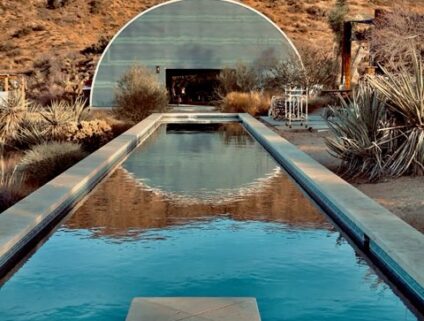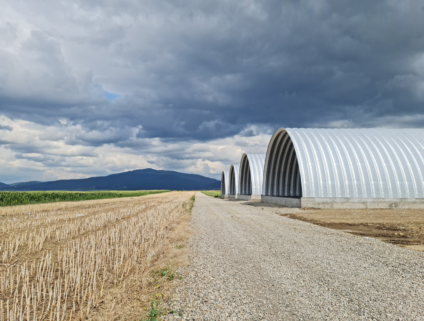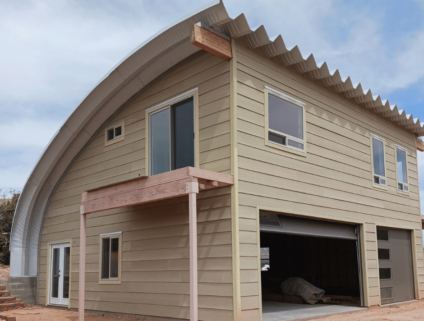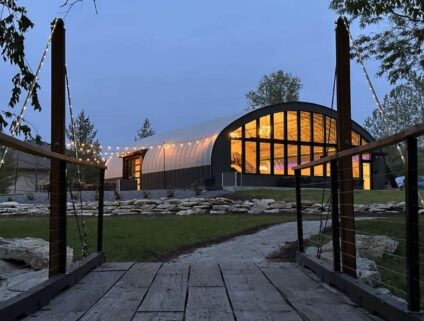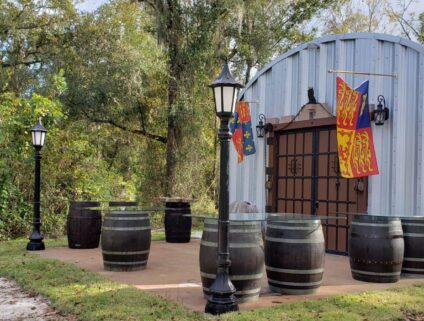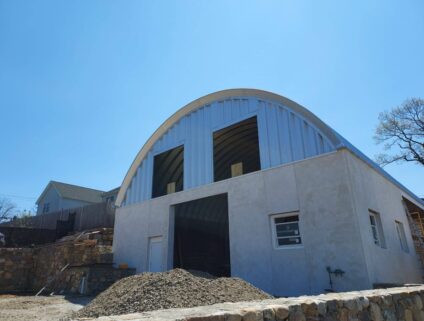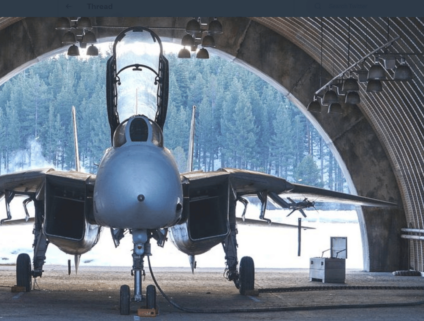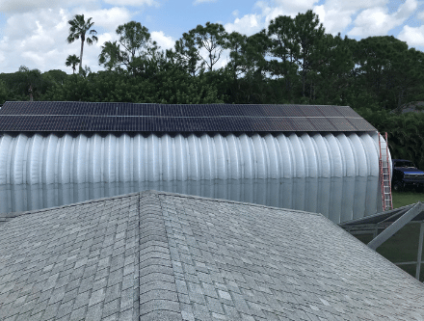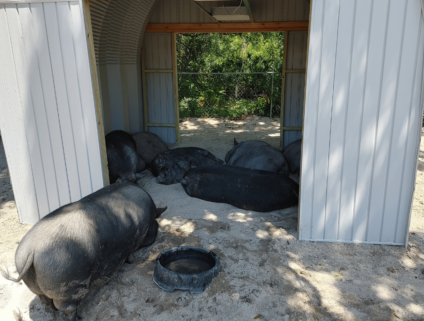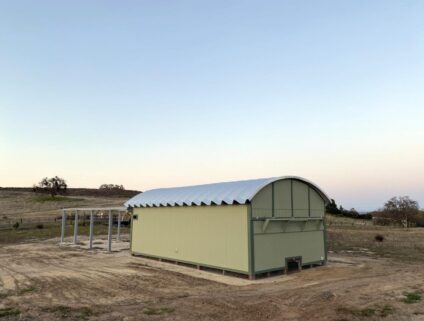Building a Roll Off Roof Observatory Using a Quonset Hut
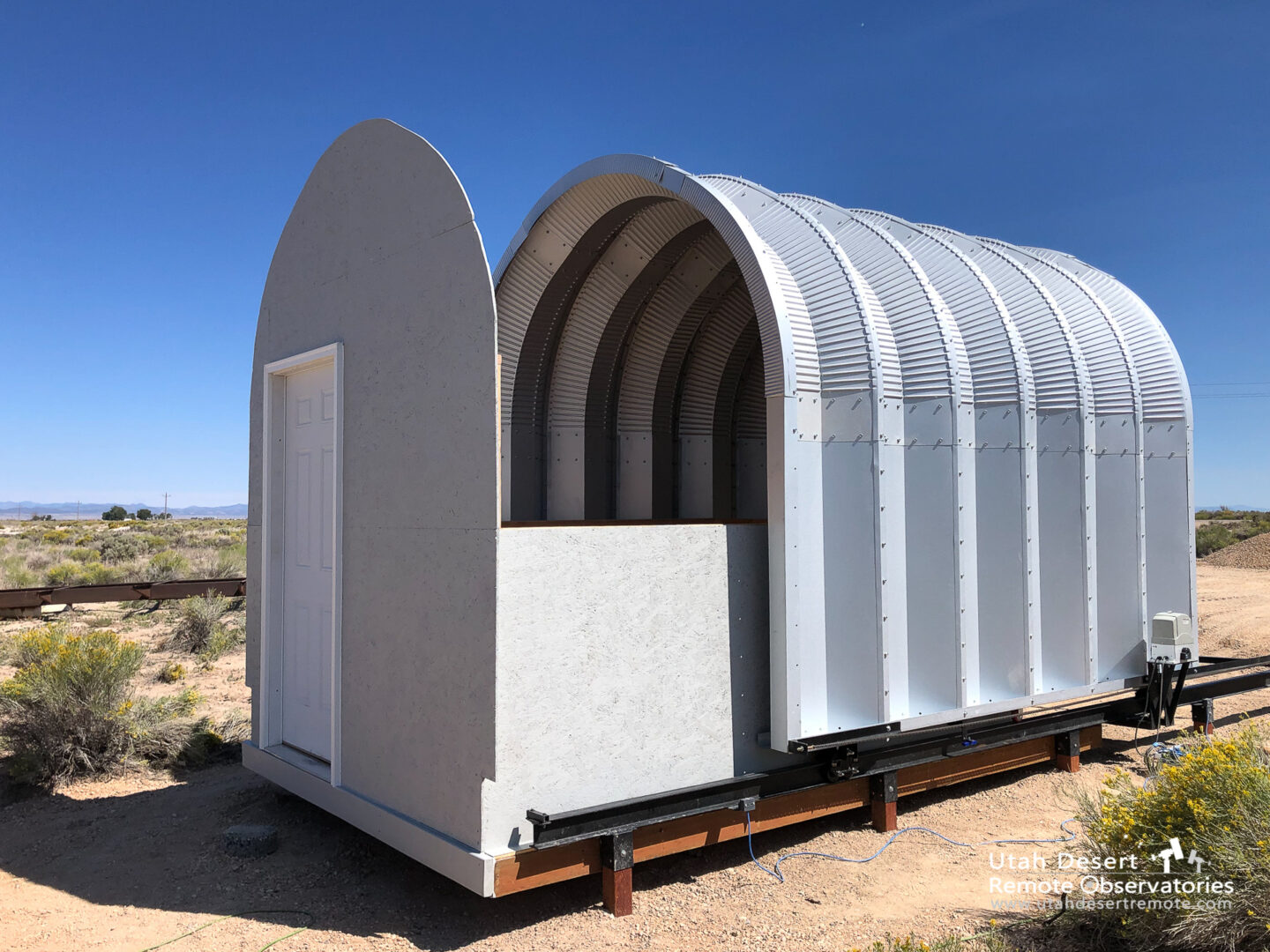
Imagine being able to capture images of the vivid night sky with just the click of a mouse. Utah Desert Remote Observatories makes this a reality with their robotic remote astrophotography–and you can get in on the action too!
The business offers different options from their Quonset hut observatory to share their view of the night sky:
- Pier rental–Rent a pier by the month with a one year lease and set up your own telescope with reliable power, on-site security and high speed internet.
- By-the-hour rental–Rent one of their systems remotely by the imaging hour and receive files when it’s done
Craig Stocks, owner of Utah Desert Remote Observatories, was inspired by Deep Sky West, an astronomical imaging observatory in New Mexico, to use a Quonset hut for his observatories.
Deep Sky West uses a 25’ x 34’ corrugated SteelMaster A-model built on a railing system and is controlled by an electric motor designed to move the entire building.
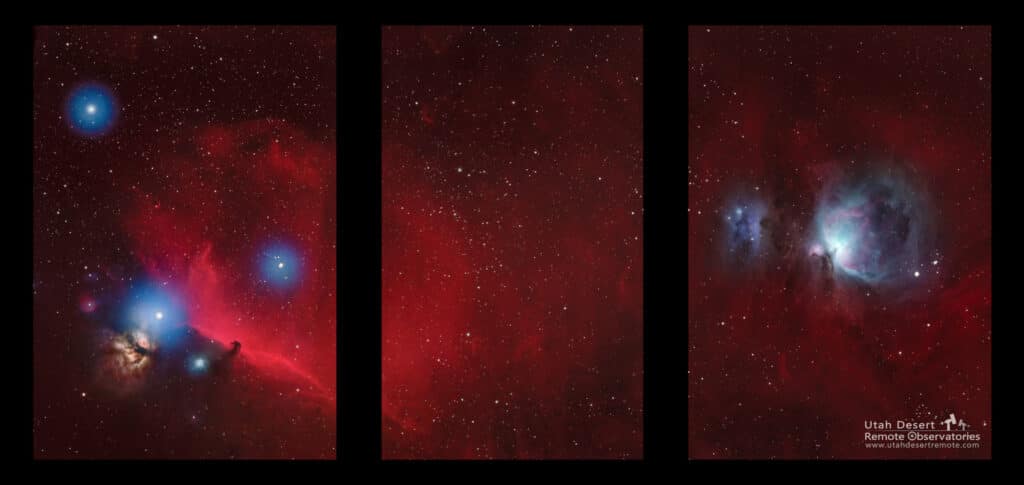
Finding the Perfect Property
Craig searched four states to find the perfect remote desert location with the following criteria:
- Dark sky
- A clear view of the horizon
- Year-round accessibility
- Sufficient space to separate from neighbors,
- Utilities like water and power
- High-speed internet because it’s an internet-based operation
“We eventually found what we were looking for east of Cedar City, [Utah,] north of St. George. That became the home for Utah Desert Remote Observatory. It needed a little bit of work. It was a little rough when we took possession.”
Craig and his family demolished the old structure on the property, then laid down a parking pad to park an RV that serves as their temporary office.
Once they set up his temporary camp, it was time to get to work on building their tiny Quonset hut roll-off roof observatory, known as ‘Thistle’. The small observatory was built more heavy duty to test design principles for a larger Quonset hut observatory that is currently in the works.
Building the Prototype Observatory
“We decided it would be smart to build a little prototype so we could really work out some of the control issues primarily,” Craig said. “So we decided to build a little 10’ X 12’ Quonset hut building with a single pier inside. We wanted to use the same process, the same kind of Quonset hut, the same technology that we are going to use for the full building.”
Craig worked with building specialist Gordon Bingen to help with the Quonset hut portion of the project’s design.
“It’s been good. I’ve been working with Gordon, he’s been very helpful,” he said. “We’ve had lots of questions that he has patiently answered.”
The observatory stands on long steel I-beams supported on posts that go down about three to four feet into the ground.
Craig enlisted the help of his family members to build the observatory, as many of them had experience in construction.
“Our son is a heavy equipment operator and works for a local electrical contractor. Running machines, burying cable, doing that sort of thing is just second nature to him. Our son in law is a welder/fabricator. Our grandson is an engineering student at DSU and Deb, my wife, is smart and willing to jump into anything.”
Craig says assembling the Quonset hut portion of the observatory took one long day of work. He and his family added plywood to create the floor of the observatory, building the floor around the concrete riser.
“Once we had the floor, then we needed to start building the walls. First Deb and I built the walls, then our son came out and joined us. With the three of us it got going a lot faster and got the walls built up around the observatory, which sit inside that sliding part.”
Now, with just the push of a button, the remote observatory slides open and reveals the telescope and telescope floor underneath.
“The way it opens up is there’s a chain pull attached to the side of the building and that goes through an opener that has a little sprocket system that pulls the chain through one way to open it, and pulls the chain one way back through to close it.”
A four-foot-tall steel pier is bolted on the concrete riser, the telescope is mounted on the pier and can be raised to whatever height is needed to have the right view.
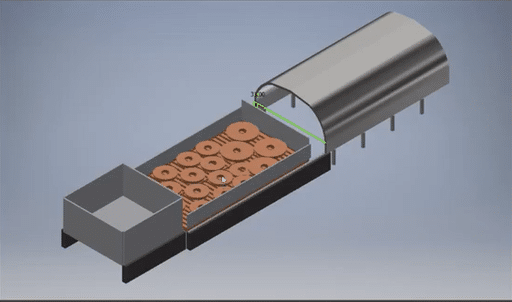
Future Observatory Plans
Now that the prototype observatory is finished and they’ve nailed down the observatory design principles, Craig and his family plan to build an even larger observatory with room for more telescopes.
“The arched part is what covers the telescope floor and then there will be an office building on the west side,” Craig said. “Then at nightfall, the roof will slide off and reveal the telescope floor. There will be 16 piers.”
If you’re interested in renting a telescoping pier and mount or an astronomical imaging system from Utah Desert Remote Observatories, click here to visit their website.
You may also check out their YouTube channel which has informational videos and live streams by clicking here.
Categories
Tags

